The Momentum of War
No. 194: Dad and the USS Comfort, Art and Words, Resources for Artists, Ocean Vuong, Eric Strebel, Sawaga River Press, Paloma Press, Utriculi, Ester Zales, Allie Sullberg, and Aki Kumar
THEN & NOW
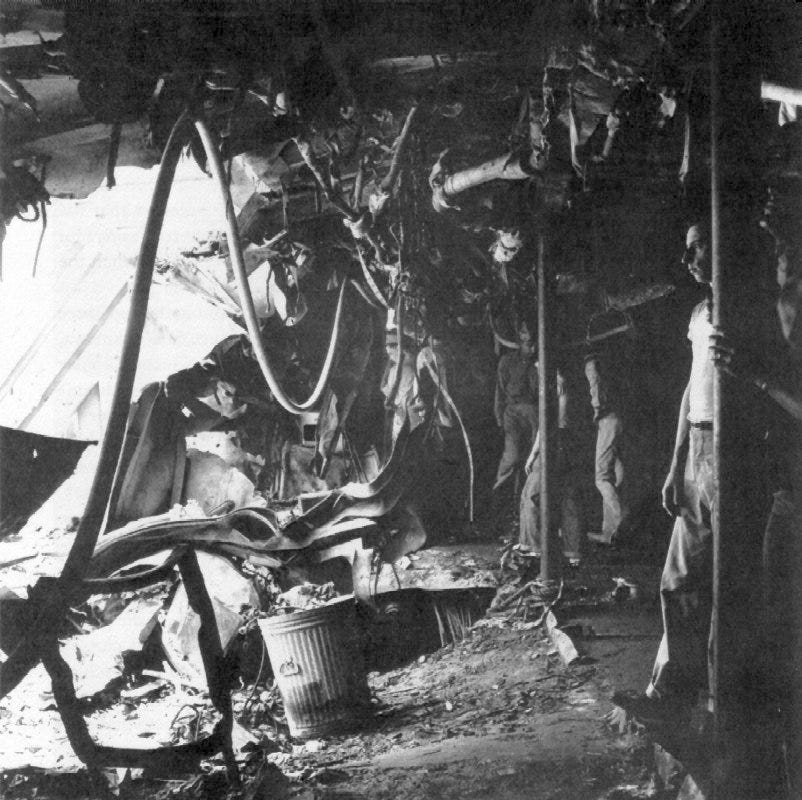
Dad and the USS Comfort
Recently, I learned about the Japanese suicide1 attack on the USS (AH-6) Comfort hospital ship on April 28, 1945. What’s driving me nuts about this is that I seem to remember my father mentioning an attack on a hospital ship in one of his letters, but now I can’t find it.
According to Christopher Klein, the attack took place after an April 1, 1945 attack by an American submarine that apparently “mistook . . . a Japanese relief ship for a destroyer . . . killed 2,000 Japanese merchant sailors and military personnel and led a Radio Tokyo broadcast to declare a week later, ‘We are justified in bombing hospital ships as they are being used as repair ships for returning wounded men back to the fighting front.’” (“When a US Hospital Ship was Attacked by a Kamikaze Pilot During WWII”).
Some of my father’s letters to the woman who would one day be my mom show the return address as “U.S.A.H.S. Comfort” (including all the periods), beginning in 1945 through 1948. This includes his July 1945 letter, where Dad wrote that he was then in the “smallest city in the South Pacific,” where he and the crew had just celebrated MacArthur’s announcement that the Philippines had been liberated. He ended by saying “I am handing this over to the Censor. All I could add is that I’m really looking forward to seeing you very soon.”
I looked up “U.S.A.H.S. Comfort” but could not find a record of it with those initials. Thanks to Wikipedia, I learned that the US Navy initials for hospital ships during WW2 were “USS,” but US Navy hospital ships were operated by the US Army!
The USS Comfort (AH-6) had docked in Guam in May, 1945. A Universal Newsreel of the attack reported that the ship had been carrying 29 dead (including doctors and nurses) and 31 wounded, plus “battle casualties from the Okinawa action”; they were “removed at an advanced island base” and the dead buried in Guam. Later, the ship would head back to California.
See 1st Lt. Doris Gardner’s site for a nurse’s experience of the attack and the Universal Newsreel.
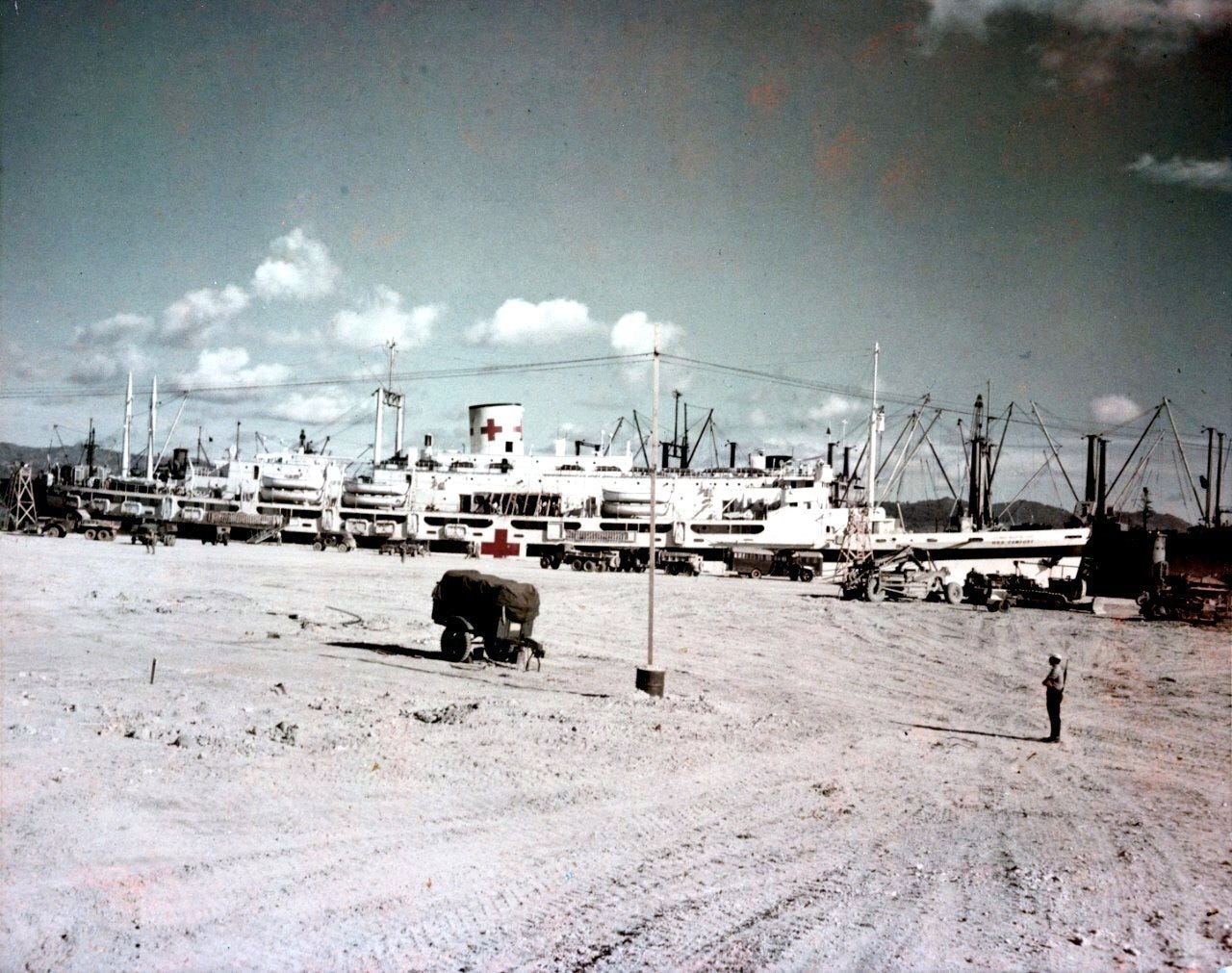
Was my father on the USS Comfort when it was attacked? Or did he transfer to the ship in Guam as civilian staff, before the vessel returned back home to California?
Sadly, the war’s violent momentum carried on even after the liberation of the Philippines. The US dropped atomic bombs on Hiroshima and Nagasaki in August of 1945.
Later that year, Dad transferred to the USS Maui, but returned to the USS Comfort half a dozen times from 1946 to 1948.
According to NavSource, after the Japanese attack, the ship “was retained by the US Army” in 1946. After repair, the USS Comfort seems to have continued to operate as a hospital ship before being declared “surplus” in 1949. So perhaps my father was employed by the US Army, and thus he considered the ship to be a US Army Hospital Ship (U.S.A.H.S.).
In a 2019 interview, Lt. Doris Gardner (now Doris Howard) said, “. . . please try and work hard for peace; that's number one. They say that war is hell and it is. Too many broken bodies….”
ART & WORDS
I love feeling that there is a creative energy that I can tap into. I feel that energy when I read my parents’ letters—when my eye lands on a group of words that resonate, or when I connect what I’m reading to a specific event that leads me to another world and time that is somehow connected to now.
That creative energy can be felt in making art, as long as I keep some level of playfulness and experimentation going on. Sometimes it’s a struggle, though. It requires a certain openness and courage, especially when things are not going well.
So, whether your art is tiny and personal, or large and ambitious—keep it going.
I’ve been invited to participate in a collaborative art project called “Discouraged Words” that are based on “so called banned words underlying our current condition.” I’m thinking about my rule-based art process might work well with this. Here’s the process (with three examples below):
I start with a set of 24 instructions, each of which are tied to one letter of the English alphabet. I choose a word (sometimes at random), and follow the instructions that come with each letter.
The multimedia work “Despedida” (below) has 9 units, each corresponding to a letter:
Four-letter Word Project
Several pages from a handmade accordion-fold book. Each page is based on a four-letter word found in The American Heritage Dictionary:
This work is based on the word “Gross,” chosen at random from the American Heritage Dictionary:
RABBIT HOLE
Resources for Artists, Writers, & Musicians
Vilcek Foundation invites applications for grants to support nonprofit organizations that work with immigrant artists and communities, and that promote diversity in the arts, sciences, education, and humanities. Deadline is coming up: June 30.
Speculative Literature Foundation: Diverse Worlds Grant and Diverse Writers Grant (each for $500). Deadlines July 31, 2025.
CALI Catalyst Grants provides unrestricted grants of up to $7,500 to California changemakers who are creating tangible impact within the arts and culture sector by shifting power and influence to underrepresented voices.
Adolph and Esther Gottlieb Foundation provides “interim financial assistance to qualified painters, printmakers, and sculptors whose needs are the result of an unforeseen, catastrophic incident, and who lack the resources to meet that situation.” No deadline.
Donate to the Songwriter Fund to provide direct financial support to songwriters and composers affected by the L.A. Fires (SONA Foundation).
“How to find Art Grants: Research Tips and Strategies”, from Fractured Atlas.
“On Poets and Prizes,” by Juliana Spahr and Stephanie Young. Thanks to poet Barbara Jane Reyes for pointing me to this article; definitely worth reading, especially if you are a poet submitting work to contests.
Artists & Writers
An intense New York Times Interview with author Ocean Vuong:
I’ve been thinking about 3D paper cuts and folding, inspired by Eric Strebel:
Utriculi Issue 2 is now open for submissions! Experimental literature and art.
Estee Zales art and writing. Estee is also on Substack as Journal Rash.
The Museum of Small and Important Things, by Allie Sullberg. It was heartening for me to read that, like me, Allie shares a one-bedroom dwelling with her partner. Space is an issue for me, too (and money!). See her article “Time, Space, and Resources.”
SOUNDINGS
Blues Meets Bollywood – Aki Kumar talks about his roots and his blues:
My gratitude goes to everyone who reads Eulipion Outpost regularly, and especially to those who have subscribed or donated on my Ko-fi page to support my efforts.
My ongoing appreciation goes to the Mysterious M. for his excellent editing skills.
Website and blog: Jeanvengua.com
A Crooked Mile (a blog)
CommonwealthCafe (Filipino American & AAPI history and print archives)
Eulipion Outpost is a reader-supported publication. To receive new posts and support my work, consider becoming a free or paid subscriber.




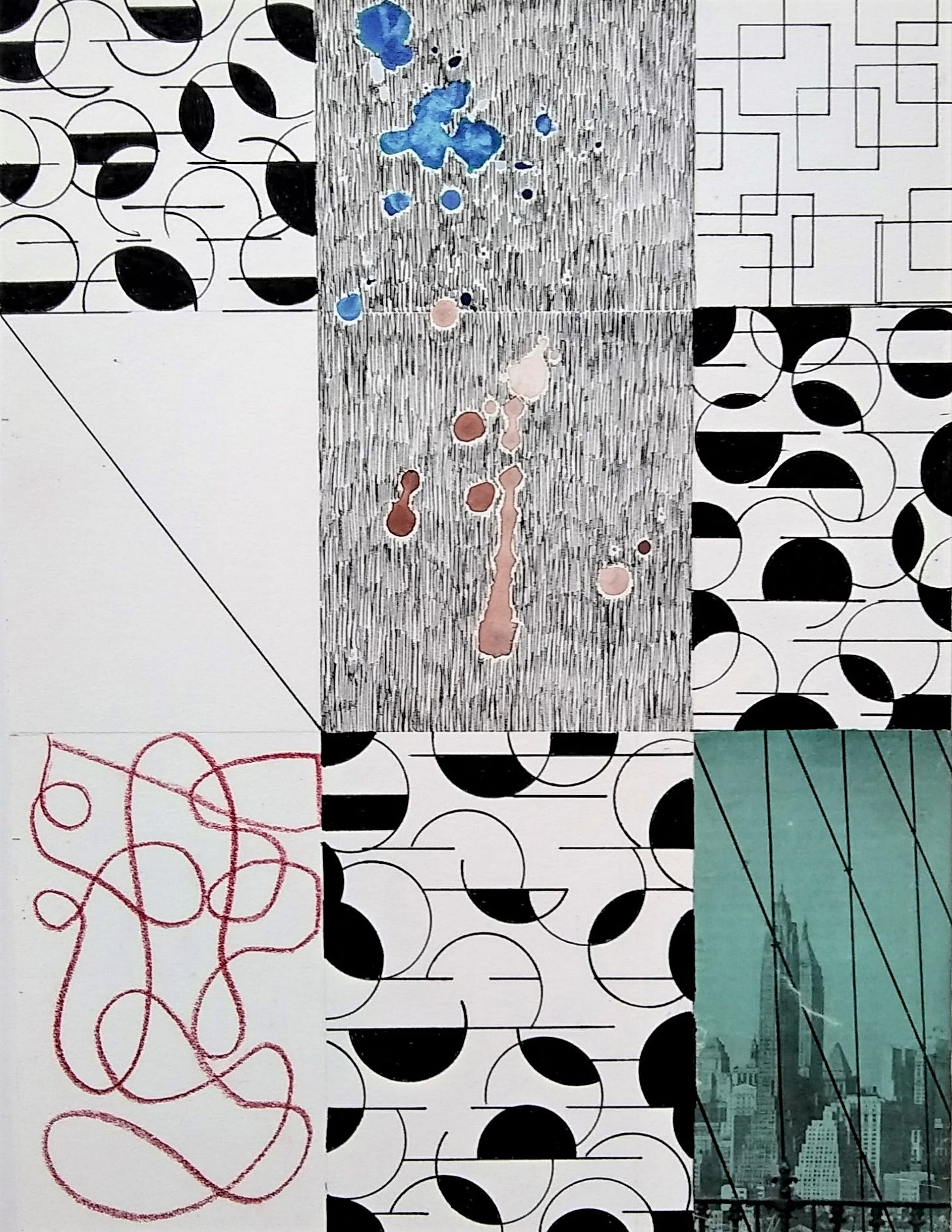
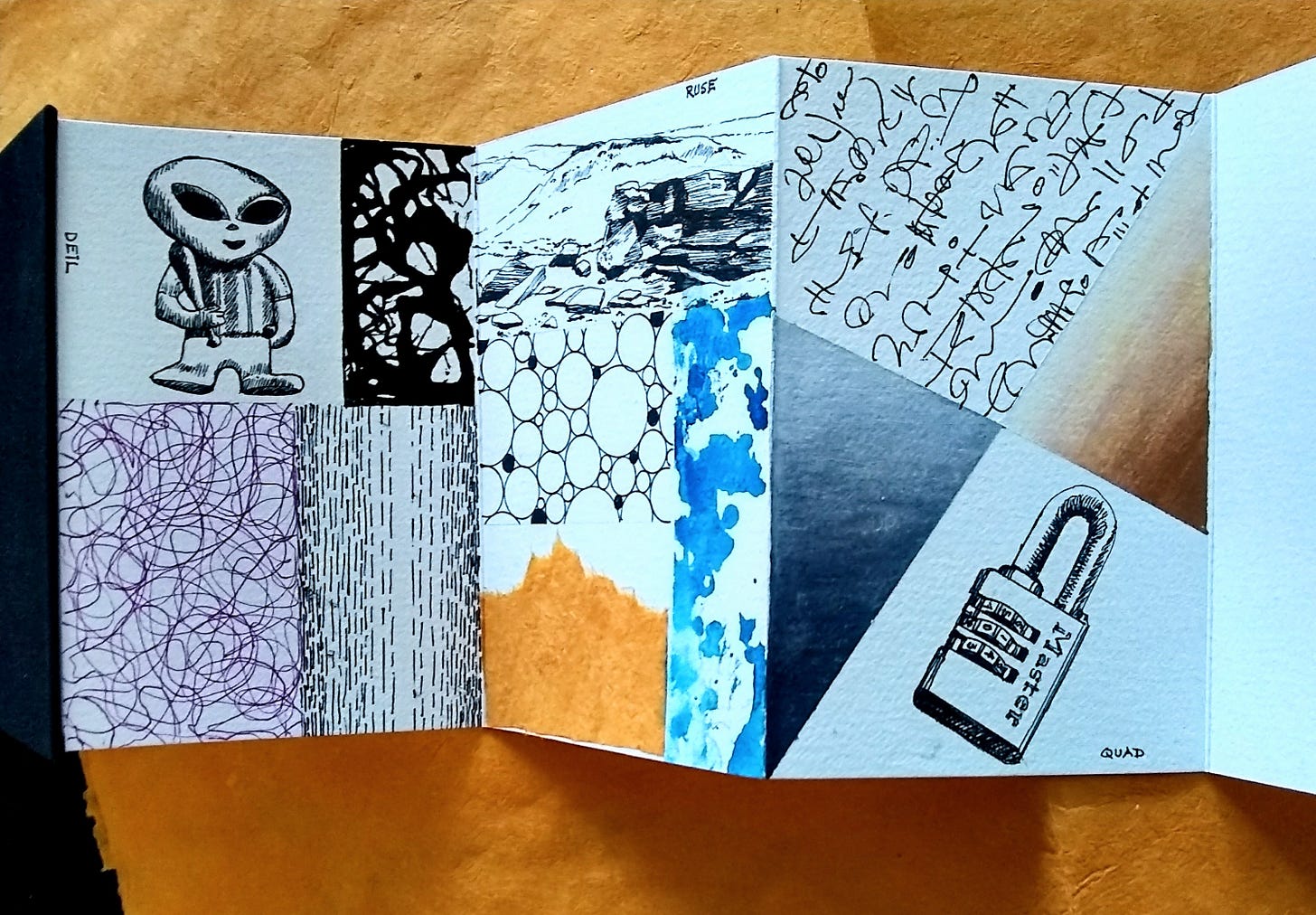
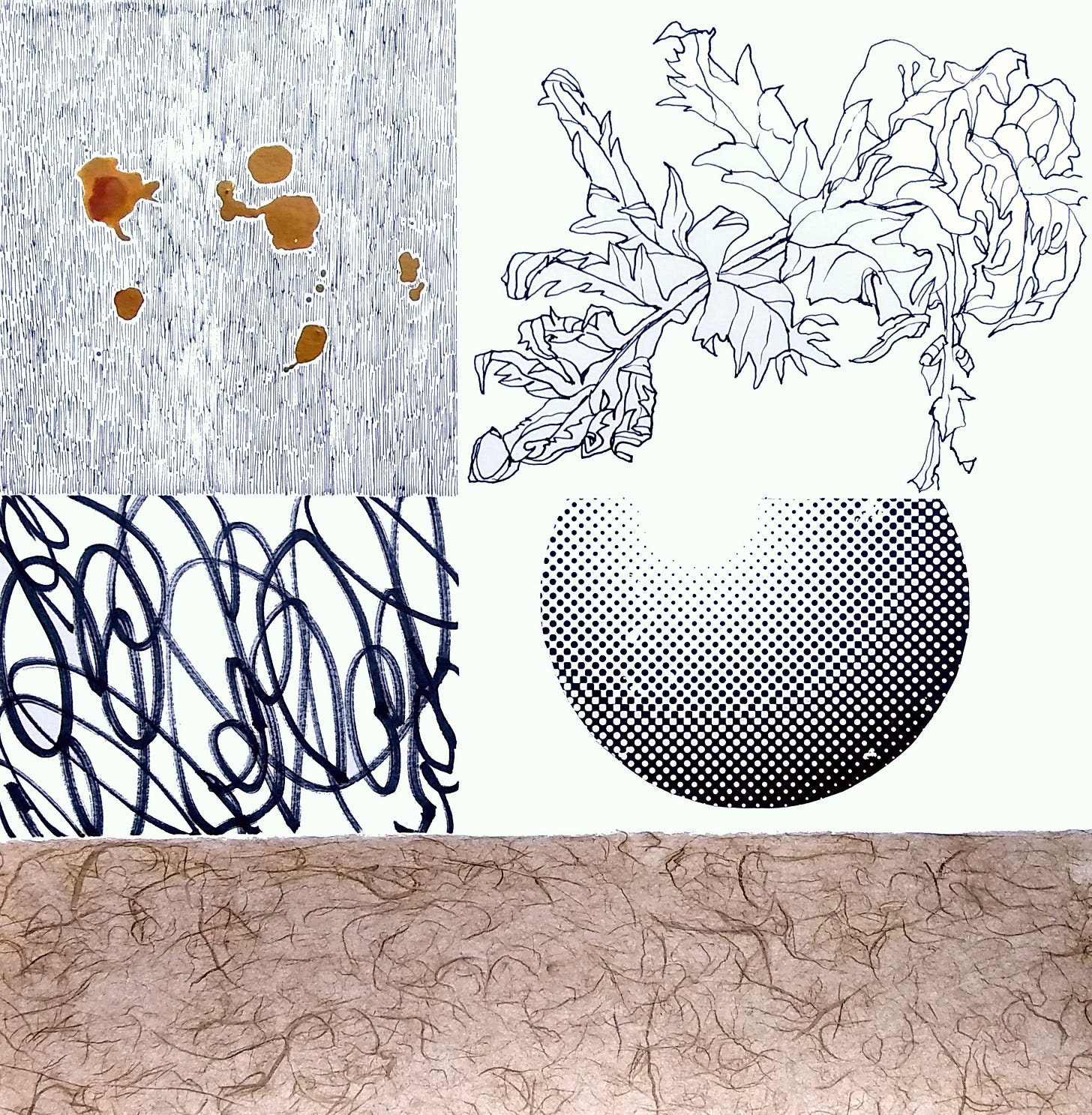

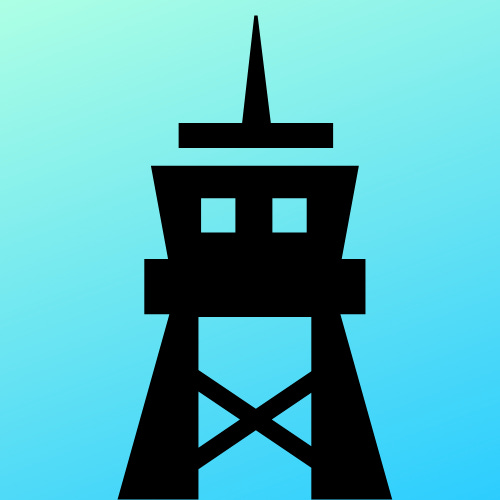
Hi Jean, just read your post about the USS Comfort. You can try to look up the ship manifest of the the USS Comfort using your Dad's legal name and approximate years. See my email for an example. My mom sailed on the U
SN Mercy (A-8) bt then, an Army Teamsport 1947 as a military dependent. My dad joins emergent Marine specifically to return to his hometown to court my mom after the war.
Great sleuthing!